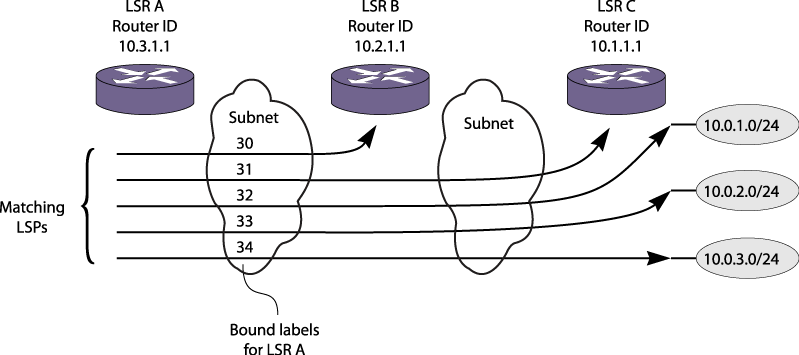Normally, a route table prefix is associated with a gateway or next hop IP address.
Matching LSP next hop
An LSP is considered matching with respect to an FEC if it has been associated with that FEC via LDP or RSVP-TE. An example of this is an IPv4 prefix for which a matching label mapping has been received by LDP. Matching LSPs are supported for all route origin types.
Calculated LSP next hop
An LSP is considered calculated with respect to an FEC if it has been associated with that FEC through a routing protocol. Both OSPF (Open Shortest Path First) and BGP (Border Gateway Protocol) can perform the calculations necessary to associate a route table prefix with an LSP next hop.
Matching and Calculated LSP Next Hops illustrates the concept of matching and calculated LSPs.

Label Bindings for LSR A describes the label bindings in the MPLS forwarding table for LSR A that are maintained for FECs reachable via LSR A to LSR C, shown in Matching and Calculated LSP Next Hops.
Label Bindings for LSR A
| Destination | Next Hop | Matching LSP Next Hop Label | Calculated LSP Next Hop Label |
|---|---|---|---|
| 10.1.1.1/32 | 10.2.1.1 | 31 | 30 |
| 10.0.1.0/24 | 10.2.1.1 | 32 | 31 |
| 10.0.2.0/24 | 10.2.1.1 | 33 | 31 |
| 10.0.3.0/24 | 10.2.1.1 | 34 | 31 |

 Print
this page
Print
this page Email this topic
Email this topic Feedback
Feedback